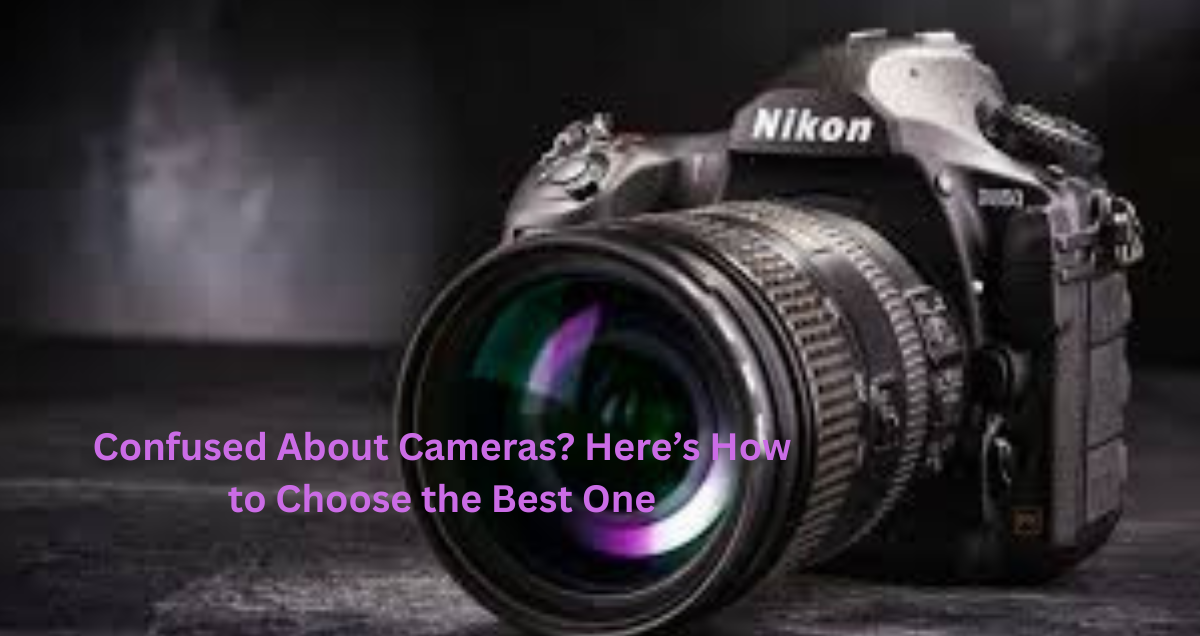Choosing the right camera can feel overwhelming. With so many options, features, and price ranges, finding a model that truly fits your needs requires clarity. Whether you’re a beginner aiming to capture family moments, a traveler documenting your journey, or someone diving into professional photography, this guide will help you make the right decision. Let’s break down the essentials and make camera buying simple and practical.
Understand Your Photography Goals
Before comparing camera specs or reading reviews, understand what you plan to do with your camera. Are you capturing still photos or recording videos? Will you be using it indoors, outdoors, or while traveling?
If you’re into vlogging, video features and audio input options matter. For wildlife or sports, fast autofocus and zoom lenses are essential. Portrait and product photographers need high image resolution and depth of field control. By identifying your purpose, you narrow down the camera type and features that align with your goals.
Types of Cameras Available
Choosing the right type of camera starts with knowing your skill level and shooting needs. Here’s a quick breakdown of common camera types:
- Compact Cameras (Point-and-Shoot): Lightweight and easy to use. Ideal for casual photography and travel. Limited manual controls but convenient.
- DSLR Cameras: Known for excellent image quality, optical viewfinders, and interchangeable lenses. Great for photography enthusiasts and professionals.
- Mirrorless Cameras: Offer similar image quality to DSLRs but in a lighter, more compact body. Fast-growing segment with lots of lens options.
- Bridge Cameras: A middle-ground between compact and DSLR cameras. Fixed zoom lens with manual settings for more control.
- Action Cameras: Designed for adventure and motion. Small, rugged, and often waterproof perfect for outdoor activities.
Each type serves different needs, so match the camera form with your shooting habits.
Key Features
When choosing a camera, don’t be swayed by just megapixel count. Here are the real features that matter:
- Sensor Size: Bigger sensors mean better image quality. Full-frame sensors outperform APS-C and Micro Four Thirds in detail and low-light performance.
- ISO Range: A wider ISO range means better performance in various lighting conditions. Cameras with good low-light sensitivity are ideal for night or indoor photography.
- Autofocus System: Fast and accurate autofocus is critical for capturing sharp images, especially of moving subjects.
- Video Capability: For content creators, look for 4K or Full HD recording, with options for external microphones and image stabilization.
- Image Stabilization: Helps reduce blur from shaky hands especially useful in low-light or while shooting handheld video.
Consider Lens Compatibility and Expandability
One of the biggest benefits of DSLR and mirrorless systems is their ability to switch lenses. Whether you want to shoot macro, wide-angle, portraits, or wildlife, having the right lens makes all the difference.
Choose a camera that offers a growing ecosystem. Canon, Sony, Nikon, and Fujifilm all offer diverse lens libraries. Investing in a system with good lens support ensures you can expand your setup over time.
Also, check for compatibility with third-party lenses, adapters, and flash systems if you plan to customize your kit further.
Size, Weight, and Build Quality
Cameras come in all shapes and sizes. For travel or daily use, a lightweight camera that fits comfortably in your hand or bag is ideal.
If you shoot in harsh conditions, consider a weather-sealed body. Ergonomics also matter a camera that feels awkward to hold or has poorly placed buttons can hinder your shooting experience.
Try handling different models in a store to see what feels right before buying.
Battery Life and Storage
Battery life can vary greatly between camera models. DSLRs typically last longer on a single charge, while mirrorless cameras may require spare batteries for extended use.
Check if the camera supports USB charging or removable batteries. For storage, dual memory card slots are a bonus for professionals who need backups or extra capacity.
Also, consider memory card types and speeds if you’re recording 4K video or shooting in burst mode.
Budget Planning
Buying a camera is an investment. Set a realistic budget not just for the body, but also for accessories like lenses, memory cards, extra batteries, tripods, and carrying cases.
If you’re a beginner, consider buying an entry-level model with a kit lens, then upgrade as you grow. For experienced users, investing in a mid-range or pro-level camera with long-term value makes more sense.
Buying second-hand from reliable sources is another way to save money, especially if you’re upgrading your gear.
Test Before You Buy
Always test a camera before making the final decision. Visit a store, try holding it, navigating the menu, and checking responsiveness.
You can also rent a camera for a few days to experience how it performs in real situations. This hands-on approach helps avoid regrets and ensures you’re comfortable with your new gear.
Also, read real user reviews and check sample photos online. Reviews from photographers who use the camera in a similar context can offer valuable insight.
Conclusion
Choosing the best camera doesn’t have to be confusing. Start with your photography needs, learn about the different types, compare meaningful features, and make sure it feels right in your hand. Don’t be dazzled by specs focus on practicality, usability, and long-term value.
Whether you’re capturing everyday memories or working towards professional goals, the best camera is the one that suits your style and purpose. Take your time, plan your investment wisely, and enjoy the art of photography with confidence.

Leave a Reply